Related Research Articles

The Time Ships is a 1995 hard science fiction novel by Stephen Baxter. A canonical sequel to the 1895 novella The Time Machine by H. G. Wells, it was officially authorized by the Wells estate to mark the centenary of the original's publication. The Time Ships won critical acclaim. It won the John W. Campbell Memorial Award and the Philip K. Dick Award in 1996, as well as the British Science Fiction Association Award in 1995. It was also nominated for the Hugo, Clarke and Locus Awards in 1996.

Invisible Man is a novel by Ralph Ellison, published by Random House in 1952. It addresses many of the social and intellectual issues faced by African Americans in the early twentieth century, including black nationalism, the relationship between black identity and Marxism, and the reformist racial policies of Booker T. Washington, as well as issues of individuality and personal identity.
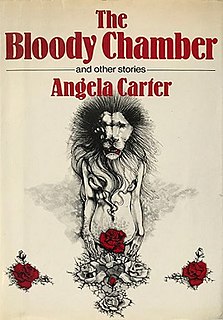
The Bloody Chamber is a collection of short fiction by English writer Angela Carter. It was first published in the United Kingdom in 1979 by Gollancz and won the Cheltenham Festival Literary Prize. The stories share a theme of being closely based upon fairytales or folk tales. However, Carter has stated:
My intention was not to do 'versions' or, as the American edition of the book said, horribly, 'adult' fairy tales, but to extract the latent content from the traditional stories.
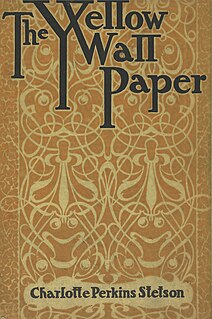
"The Yellow Wallpaper" is a short story by American writer Charlotte Perkins Gilman, first published in January 1892 in The New England Magazine. It is regarded as an important early work of American feminist literature for its illustration of the attitudes towards mental and physical health of women in the 19th century.

Green Shadows, White Whale is a 1992 novel by Ray Bradbury. It gives a fictionalized account of his journey to Ireland in 1953-1954 to write a screen adaptation of the novel Moby-Dick with director John Huston. Bradbury has said he wrote it after reading actress Katharine Hepburn's account of filming The African Queen with Huston in Africa. The title itself is a play on Peter Viertel's novel White Hunter, Black Heart, which is also about Huston.

"The Outsider" is a short story by American horror writer H. P. Lovecraft. Written between March and August 1921, it was first published in Weird Tales, April 1926. In this work, a mysterious individual who has been living alone in a castle for as long as he can remember decides to break free in search of human contact and light. "The Outsider" is one of Lovecraft's most commonly reprinted works and is also one of the most popular stories ever to be published in Weird Tales.

"From Beyond" is a horror genre short story by American writer H. P. Lovecraft. It was written in 1920 and was first published in The Fantasy Fan in June 1934.
"Hypnos" is a short story by American horror fiction writer H. P. Lovecraft, penned in March 1922 and first published in the May 1923 issue of National Amateur.

Betrachtung is a collection of eighteen short stories by Franz Kafka written between 1904 and 1912. It was Kafka's first published book, printed at the end of 1912 in the Rowohlt Verlag on an initiative by Kurt Wolff.

H. G. Wells was a prolific writer of both fiction and non-fiction. His writing career spanned more than sixty years, and his early science fiction novels earned him the title of "The Father of Science Fiction".
"Always" is a science fiction short story by American writer Karen Joy Fowler. Originally published in Asimov's Science Fiction, it won the 2007 Nebula Award for Best Short Story.
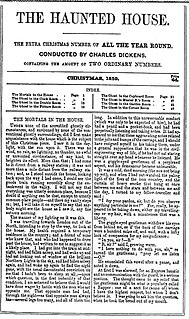
"The Haunted House" is a story series published in 1859 for the weekly periodical All the Year Round. It was "Conducted by Charles Dickens", with Charles Dickens writing the opening and closing stories, framing stories by Dickens himself and five other authors.

Jesus' Son is a collection of short fiction by Denis Johnson published in 1992 by Farrar, Straus & Giroux. A short story cycle comprising 11 pieces, Jesus' Son is Johnson's most critically acclaimed and popular literary effort, and the work with which Johnson is most identified. In 1999, it was adapted into a film of the same name by Elizabeth Cuthrell, David Urrutia, and Oren Moverman, directed by Alison Maclean.
The idea of a fourth dimension has been a factor in the evolution of modern art, but use of concepts relating to higher dimensions has been little discussed by academics in the literary world. From the late 19th century onwards, many writers began to make use of possibilities opened up by the exploration of such concepts as hypercube geometry. While many writers took the fourth dimension to be one of time, others preferred to think of it in spatial terms, and some associated the new mathematics with wider changes in modern culture.
The Heart of the Park is a short story written by Flannery O'Connor.

"In the Abyss" is a short story by English writer H. G. Wells, first published in 1896 in Pearson's Magazine. It was included in The Plattner Story and Others, a collection of short stories by Wells first published in 1897. The story describes a journey to the ocean bed in a specially-designed metal sphere; the explorer within discovers a civilization of human-like creatures.
Revenge: Eleven Dark Tales is a collection of interconnected short stories by Yōko Ogawa. It was published in Japan in 1998, and in the United States by Picador in 2013. Stephen Snyder translated the book into English.
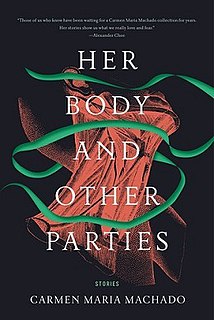
Her Body and Other Parties is a 2017 short story collection by the writer Carmen Maria Machado, published by Graywolf Press. The collection won the Shirley Jackson Award, and was a finalist for the National Book Award for Fiction. The story "The Husband Stitch" was nominated for the Nebula Award for Best Novelette.

England and Other Stories is a 2014 collection of 25 short stories by the author Graham Swift.
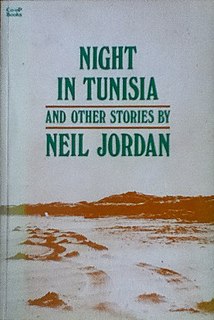
Night in Tunisia was the first book by Irish writer Neil Jordan in 1976, containing ten stories and was published by The Irish Writers Co-operative in Dublin. The story's title is a jazz standard composed by Dizzy Gillespie. It won a Somerset Maugham Award and in 1979 it won the Guardian Fiction Prize and was then published by Writers and Readers in the UK and by George Braziller in the US.
References
- ↑ The Plattner Story title listing at the Internet Speculative Fiction Database. Retrieved 16 January 2019.